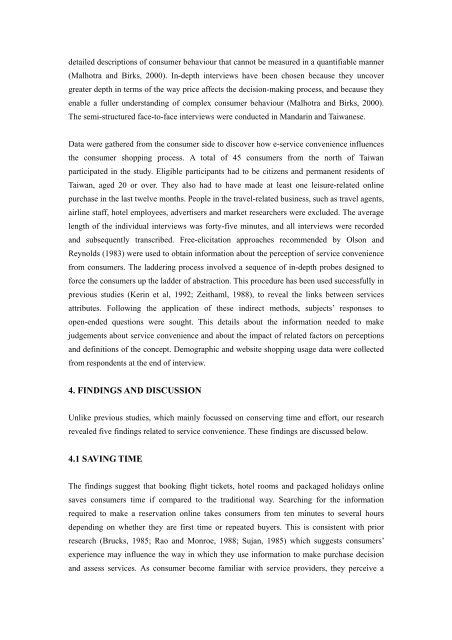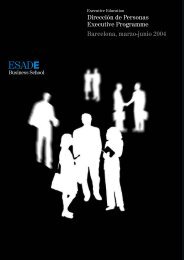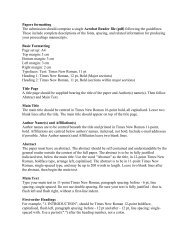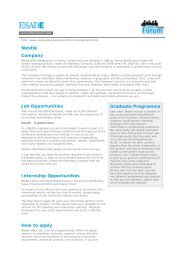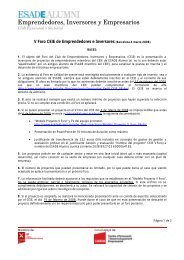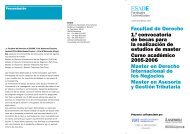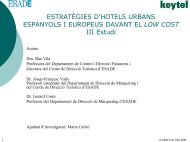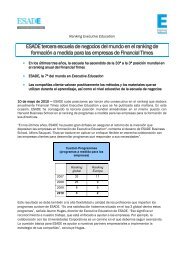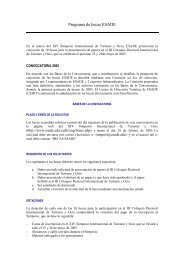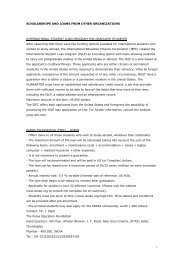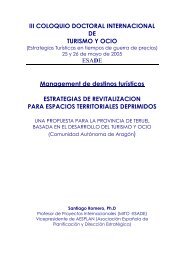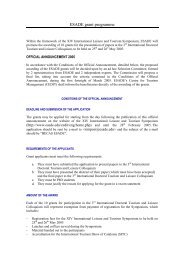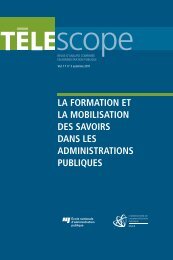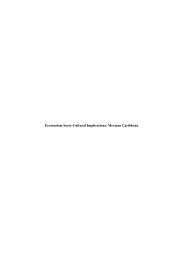taiwanese consumers' perception of service convenience ... - Esade
taiwanese consumers' perception of service convenience ... - Esade
taiwanese consumers' perception of service convenience ... - Esade
Create successful ePaper yourself
Turn your PDF publications into a flip-book with our unique Google optimized e-Paper software.
detailed descriptions <strong>of</strong> consumer behaviour that cannot be measured in a quantifiable manner<br />
(Malhotra and Birks, 2000). In-depth interviews have been chosen because they uncover<br />
greater depth in terms <strong>of</strong> the way price affects the decision-making process, and because they<br />
enable a fuller understanding <strong>of</strong> complex consumer behaviour (Malhotra and Birks, 2000).<br />
The semi-structured face-to-face interviews were conducted in Mandarin and Taiwanese.<br />
Data were gathered from the consumer side to discover how e-<strong>service</strong> <strong>convenience</strong> influences<br />
the consumer shopping process. A total <strong>of</strong> 45 consumers from the north <strong>of</strong> Taiwan<br />
participated in the study. Eligible participants had to be citizens and permanent residents <strong>of</strong><br />
Taiwan, aged 20 or over. They also had to have made at least one leisure-related online<br />
purchase in the last twelve months. People in the travel-related business, such as travel agents,<br />
airline staff, hotel employees, advertisers and market researchers were excluded. The average<br />
length <strong>of</strong> the individual interviews was forty-five minutes, and all interviews were recorded<br />
and subsequently transcribed. Free-elicitation approaches recommended by Olson and<br />
Reynolds (1983) were used to obtain information about the <strong>perception</strong> <strong>of</strong> <strong>service</strong> <strong>convenience</strong><br />
from consumers. The laddering process involved a sequence <strong>of</strong> in-depth probes designed to<br />
force the consumers up the ladder <strong>of</strong> abstraction. This procedure has been used successfully in<br />
previous studies (Kerin et al, 1992; Zeithaml, 1988), to reveal the links between <strong>service</strong>s<br />
attributes. Following the application <strong>of</strong> these indirect methods, subjects’ responses to<br />
open-ended questions were sought. This details about the information needed to make<br />
judgements about <strong>service</strong> <strong>convenience</strong> and about the impact <strong>of</strong> related factors on <strong>perception</strong>s<br />
and definitions <strong>of</strong> the concept. Demographic and website shopping usage data were collected<br />
from respondents at the end <strong>of</strong> interview.<br />
4. FINDINGS AND DISCUSSION<br />
Unlike previous studies, which mainly focussed on conserving time and effort, our research<br />
revealed five findings related to <strong>service</strong> <strong>convenience</strong>. These findings are discussed below.<br />
4.1 SAVING TIME<br />
The findings suggest that booking flight tickets, hotel rooms and packaged holidays online<br />
saves consumers time if compared to the traditional way. Searching for the information<br />
required to make a reservation online takes consumers from ten minutes to several hours<br />
depending on whether they are first time or repeated buyers. This is consistent with prior<br />
research (Brucks, 1985; Rao and Monroe, 1988; Sujan, 1985) which suggests consumers’<br />
experience may influence the way in which they use information to make purchase decision<br />
and assess <strong>service</strong>s. As consumer become familiar with <strong>service</strong> providers, they perceive a


